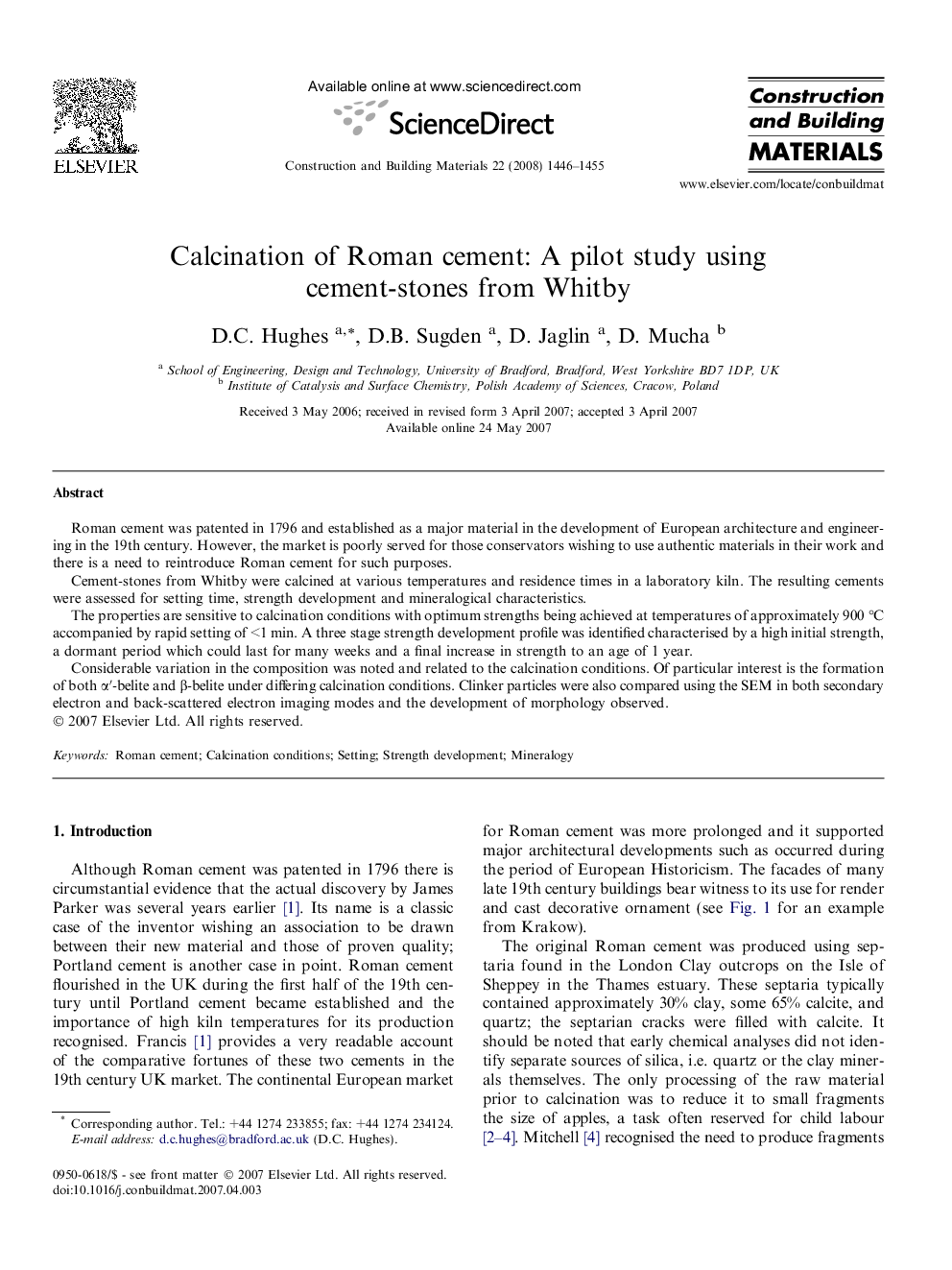| Article ID | Journal | Published Year | Pages | File Type |
|---|---|---|---|---|
| 261225 | Construction and Building Materials | 2008 | 10 Pages |
Roman cement was patented in 1796 and established as a major material in the development of European architecture and engineering in the 19th century. However, the market is poorly served for those conservators wishing to use authentic materials in their work and there is a need to reintroduce Roman cement for such purposes.Cement-stones from Whitby were calcined at various temperatures and residence times in a laboratory kiln. The resulting cements were assessed for setting time, strength development and mineralogical characteristics.The properties are sensitive to calcination conditions with optimum strengths being achieved at temperatures of approximately 900 °C accompanied by rapid setting of <1 min. A three stage strength development profile was identified characterised by a high initial strength, a dormant period which could last for many weeks and a final increase in strength to an age of 1 year.Considerable variation in the composition was noted and related to the calcination conditions. Of particular interest is the formation of both α′-belite and β-belite under differing calcination conditions. Clinker particles were also compared using the SEM in both secondary electron and back-scattered electron imaging modes and the development of morphology observed.
